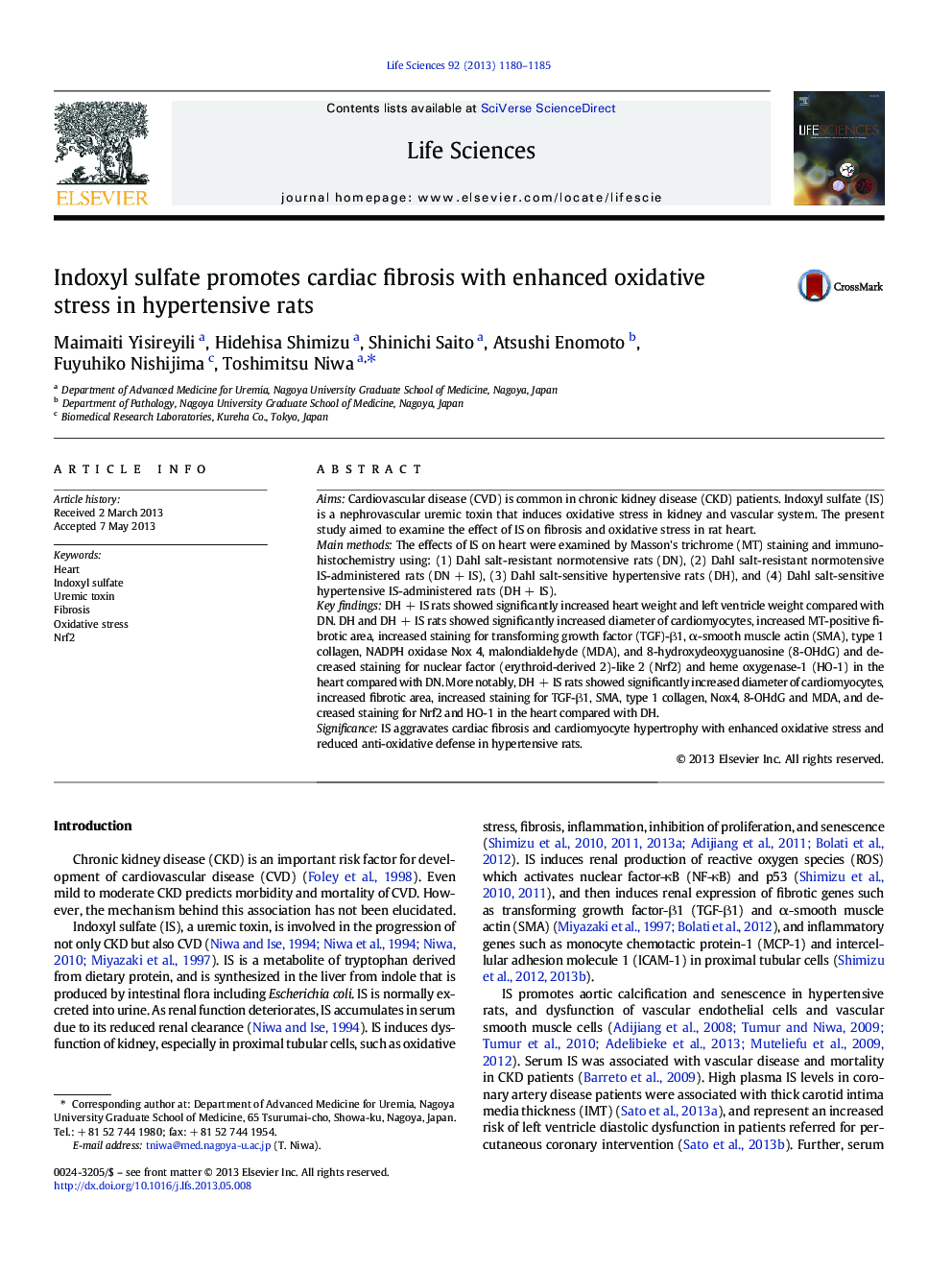| Article ID | Journal | Published Year | Pages | File Type |
|---|---|---|---|---|
| 5842542 | Life Sciences | 2013 | 6 Pages |
AimsCardiovascular disease (CVD) is common in chronic kidney disease (CKD) patients. Indoxyl sulfate (IS) is a nephrovascular uremic toxin that induces oxidative stress in kidney and vascular system. The present study aimed to examine the effect of IS on fibrosis and oxidative stress in rat heart.Main methodsThe effects of IS on heart were examined by Masson's trichrome (MT) staining and immunohistochemistry using: (1) Dahl salt-resistant normotensive rats (DN), (2) Dahl salt-resistant normotensive IS-administered rats (DN + IS), (3) Dahl salt-sensitive hypertensive rats (DH), and (4) Dahl salt-sensitive hypertensive IS-administered rats (DH + IS).Key findingsDH + IS rats showed significantly increased heart weight and left ventricle weight compared with DN. DH and DH + IS rats showed significantly increased diameter of cardiomyocytes, increased MT-positive fibrotic area, increased staining for transforming growth factor (TGF)-β1, α-smooth muscle actin (SMA), type 1 collagen, NADPH oxidase Nox 4, malondialdehyde (MDA), and 8-hydroxydeoxyguanosine (8-OHdG) and decreased staining for nuclear factor (erythroid-derived 2)-like 2 (Nrf2) and heme oxygenase-1 (HO-1) in the heart compared with DN. More notably, DH + IS rats showed significantly increased diameter of cardiomyocytes, increased fibrotic area, increased staining for TGF-β1, SMA, type 1 collagen, Nox4, 8-OHdG and MDA, and decreased staining for Nrf2 and HO-1 in the heart compared with DH.SignificanceIS aggravates cardiac fibrosis and cardiomyocyte hypertrophy with enhanced oxidative stress and reduced anti-oxidative defense in hypertensive rats.
